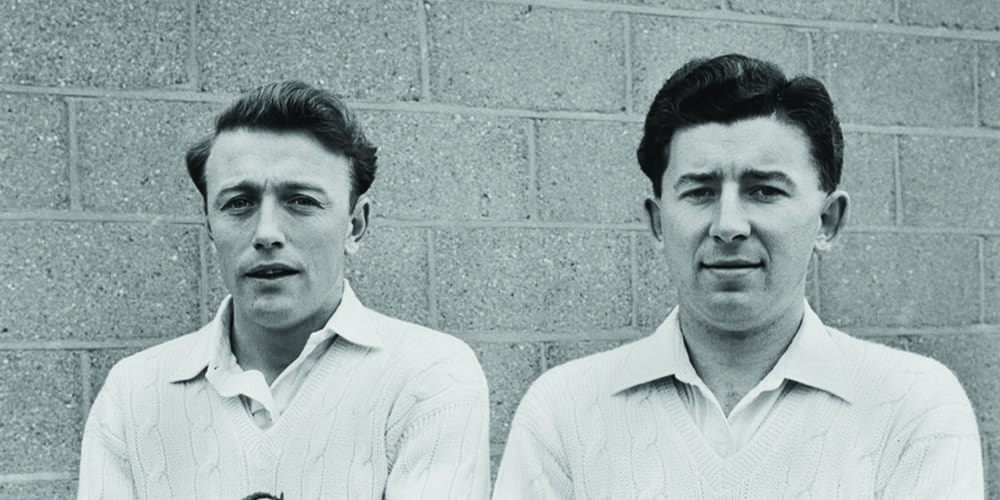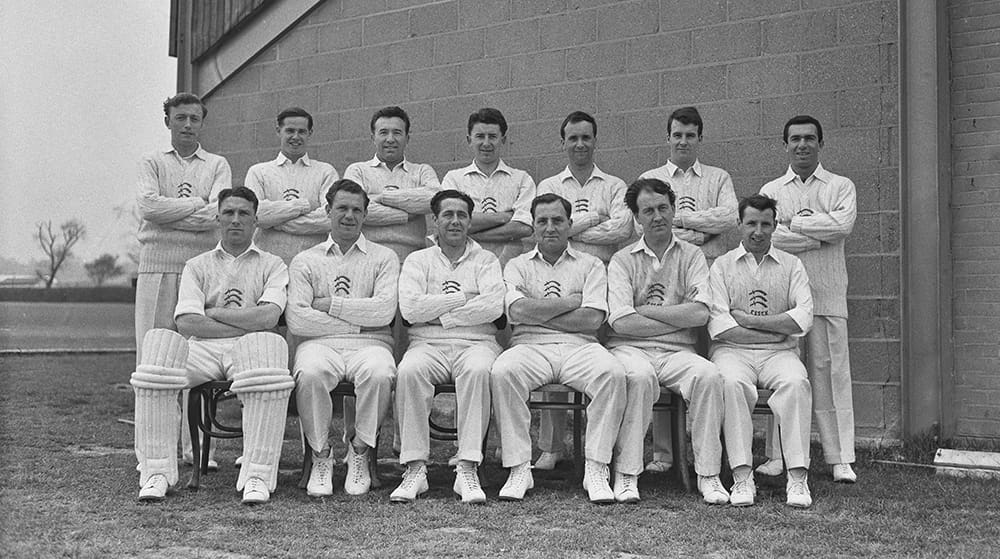
A familiar face at Chelmsford during the cricket season, Geoff Smith is Essex’s oldest living capped player and a true gentleman, always happy to reminisce about a bygone era of county cricket.
Born in Braintree on 2nd April 1935, Geoff celebrates his 90th birthday today. He spent 12 seasons with Essex between 1955 and 1966, initially as an off-break bowler and useful batsman. Over time, his batting took prominence as he moved up the order, while his bowling became less frequent. In total, Geoff made 239 first-class appearances for Essex, scoring over 8,500 runs, including four centuries, and achieving 1,000 runs in a season on four occasions.
Renowned for his impeccable appearance during his playing days, Geoff’s sartorial elegance remains unchanged. Always neatly attired, he enjoys reflecting on his career and offering insights into today’s game.
“I joined the Essex ground staff straight from school at 16, alongside Brian Taylor, Michael Bear, Les Savill, and Barry Knight—we all progressed through the Essex Schoolboys teams,” Geoff recalls.
“When we joined the staff, Frank Rist was our coach. He was a kind and fair man who didn’t rule with an iron rod but commanded respect. If you stepped out of line, you felt you’d let him down as well as yourself. We all had our moments, but we knew Frank was in charge.”

After two years with the Club and Ground and Second XI teams, Geoff’s career was interrupted by National Service. “I joined the RAF in June 1953 and returned to Essex on 3rd June 1955. Shortly after, I made my first-class debut against Gloucestershire at Chalkwell Park. We were 180 for 7 when I joined Doug Insole at the crease. He was unorthodox but brilliant. He advised me to block the ball and see how far we could go. Doug went on to score a century, and I finished 27 not out before we declared.”
That debut remains a cherished memory, especially as his parents, who ran The Star pub in Braintree, listened to John Arlott’s BBC commentary. “We won the match, which was a perfect way to round off my debut.”
Feeling confident after his early performances, Geoff quickly learned the game’s challenges. “We played Nottinghamshire at Trent Bridge, where I faced Bruce Dooland, an Australian leg-spinner. I couldn’t lay a bat on him. In frustration, I charged down the wicket, middled the ball beautifully—straight to mid-off. That moment taught me how difficult this game really was.”
Geoff speaks highly of Essex captain Doug Insole. “He never asked anyone to do something he wouldn’t do himself. If we were setting up a declaration, he’d be the first to bowl or take charge of a run chase. I often batted with him when I opened, and he came in at four. It was always a pleasure—never dull.”
A special milestone came in 1958 at Clacton. “The wickets there were often tricky, especially when the tide came in. Hampshire had a strong attack with Derek Shackleton and Vic Cannings. I was batting at number three, and we lost wickets quickly. Ken Preston came in at number 10, and the last man, Alan Hurd, wasn’t much of a batsman. I reached 96 but couldn’t find singles. Then Cannings bowled a ball on leg stump, and I hit it over mid-wicket for six to bring up my first hundred. My teammates were genuinely delighted, which reflected the camaraderie we had.”
Geoff played during an era rich with talent. “We competed against top players who barely played for England but dominated county cricket—Middlesex’s Jack Robertson, Worcestershire’s Don Kenyon, and many others. Watching players like Peter May and Colin Cowdrey bat was a privilege. I remember fielding at cover when May drove a ball at me with such force it was unbelievable.”
Westcliff’s Chalkwell Park was another cherished ground. “During a festival week, we played Somerset. Gordon Barker was injured, so Les Savill and I opened on a bad wicket. We put on 99, and I scored two 70s in a day when 28 wickets fell—quite the occasion.”
Despite his love for the game, Geoff laments some modern trends. “Cricket is a wonderful sport, but gamesmanship has crept in. In our time, if you edged a ball and didn’t walk, you wouldn’t play the next game. Doug Insole insisted we uphold integrity, even telling umpires before matches, ‘My lads will walk if they nick it, but I don’t want silly LBW decisions in return.’ That was fair, wasn’t it?”
Before Essex had a permanent home, they played across multiple festival grounds, including the Hoffman Sports Ground in Chelmsford. “We had two Championship matches there, and in 1961 against Derbyshire, I scored 148—my highest first-class score, with five sixes and 18 fours.”
Playing on outgrounds had its quirks. “Local council groundsmen prepared the pitches, and they weren’t always ideal. There’s a story that Tom Graveney once said, ‘You knew you were near an Essex ground because of the green glow in the sky.’ Trevor Bailey, when he was our captain, liked green wickets, which suited his bowling but made life difficult for openers facing England’s best new-ball bowlers.”
Geoff retired in 1966 and became a director at Pope & Smith, a sports retail company. He still enjoys playing golf and remains an avid follower of the game.
Reflecting on his career, he says, “We played for the love of the game and for our supporters. I wasn’t a star, just an ordinary county cricketer, but I had a wonderful career alongside some great players, and the memories live on.”
Happy birthday, Geoff!